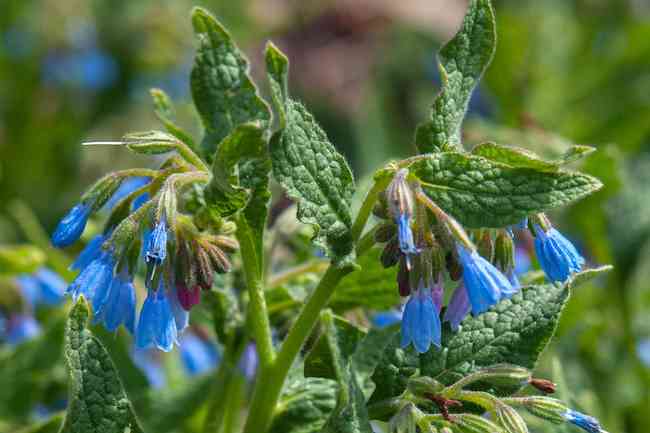Drainage pitch planting and comfery tea

With the drainage ditch at the side of the house we could plant it with ground cover plants that will stabilise the ditch banks and can be strimmed down once a year to allow for winter drainage. Suggested plants are
polygonum bistorta superbum, Hosta, Rheum, flag iris, Alchemilla mollis, astilbes and comfrey. The comfrey could be made into a natural fertiliser.
Liquid fertilizers are a great way to nourish your plants,providing nutrients in a readily available form,so they’re quickly absorbed.There are many chemical fertilizers that will do the job but,by making your own using comfrey leaves,you’ll have a steady supply of organic,nutrient-rich feed at little or no cost.
Deep-rooted comfrey can extract large quantities of nutrients from far below the soil’s surface,inaccessible to other plants.These nutrients are stored in the leaves.Gardeners can access these nutrients by harvesting the leaves and letting them break down to release a rich,dark,nutrient-rich plant food.
Making your own garden fertiliser – comfrey tea
1.Harvest comfrey leaves from the base of established plants.The hairy leaves can irritate the skin, so wear gloves if necessary.
2.Remove flowers and tough stems, then chop up the leaves and pack them tightly into a water-tight container.If possible,choose a container with a lid, as the solution can smell as the leaves break down.Use a brick to weigh down the leaves.
3.Check on the progress every few weeks.The leaves will break down gradually, releasing a smelly brown liquid.Top up with fresh leaves and collect any liquid,storing it in a cool, dark place.
4.Dilute the collected liquid at a rate of one part comfrey to 10 parts water – the darker it is,the more you’ll need to dilute it.Use the solution as a potassium-rich liquid fertilizer to encourage flowers and fruit set.